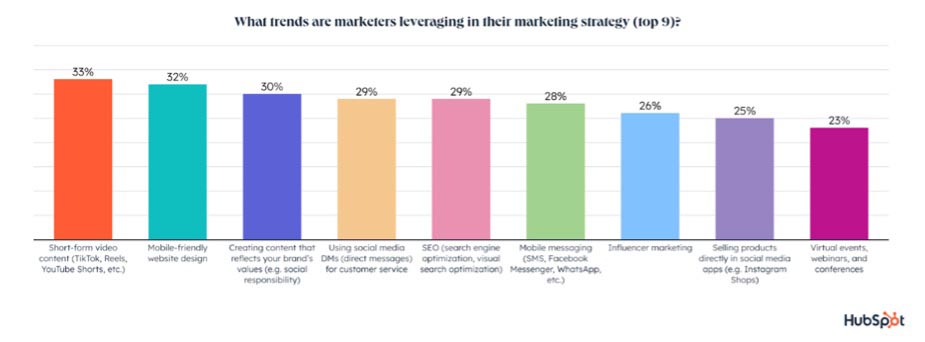As we look forward to 2023, what will the world of marketing look like? Certainly not entirely like it did in 2022. What will change? First, we need to understand that marketing is changing because consumers are changing. A recent consumer attitudes study from GWI, an audience targeting company, found that the chaos and uncertainty of the past several years had fundamentally changed the psyches of the average consumer. (See WhatTheyThink’s report on this study here.) For context, here are the global takeaways from the GWI study:
- Consumers are still spending, but they are becoming less lavish. They are less concerned about using their possessions as a way to reflect their identities and are becoming more practical-minded. They still love their influencers, but they are reducing their addiction to striving to attain those influencers’ high-end lifestyles.
- Consumers are focusing more “homeward,” including prioritizing a healthier work-life balance. Home and family are more important than ever. GWI even saw trends toward more offline activities, such as crafting and reading.
- Consumers want brands to “do the right thing,” both in terms of social justice and sustainability. They also want more than lip service. They want to see brands actually putting their money where their mouths are. They want to see real action.
What do these trends mean for marketers? HubSpot’s Inbound Marketing Report 2023 provides some insight. Interestingly, the survey data line up with the GWI data rather well.
What Changed in 2023?
According to HubSpot’s survey, there are seven fundamental shifts occurring among marketers (and, ultimately, impacting everyone else) in 2023. What are they?
1. Brands are becoming even more data driven. Brands must better understand their audiences and do a better job of targeting. This is nothing new, of course. But as consumers become increasingly relational, this needs to go far beyond demographics. It includes things like how people like to shop, where and how they consume media, the online communities they are part of, and the social causes they care about. This requires a deeper data set than demographics alone.
2. More marketers have made pivots part of their plans. With the winds of the economy, politics, and international relationships swirling, brands need the ability to flex and pivot with how a fluid global environment impacts their buyers. That means investing in the kinds of automation and workflow systems that will give them that flexibility. (As the expression goes, it’s hard to turn a battleship on a dime. From a maneuverability perspective, automation turns a clunky marketing workflow from a battleship into a fighter jet.) The overwhelming majority (80%) of respondents said they had seen more change in their industry in the past three years than they had in the previous 50 years. Eighty-three percent (83%) said they had been forced to pivot two to four times in a single year.
3. More brands aim to create content that reflects their values. Here, as with the GWI survey, we see the focus on values over products, with “values” serving as a euphemism for social justice and environmental sustainability. This also ties in with trend #7: companies building online communities to engage consumers and humanize their brands. According to HubSpot, 30% of brands say they are doing this, the third most important trend for 2023.

4. Marketers are increasingly using CRMs to organize and track data. It’s difficult to make efficient and effective use of data you can’t find or organize. While CRMs are a fact of life for printers, that their growing use among their client base is good news. The more your customers invest in CRM, the more powerful you can help their data-driven campaigns become. Here’s a look at the top marketing strategies that brands are looking to try for the first time this year:

5. Increasing focus on customer experience. If “pivot” is the buzzword for 2023, “customer experience” defined 2022. That focus will continue, and CX is increasingly becoming a normalized part of even smaller companies’ marketing budgets.

6. Social media direct messaging is growing in popularity as a form of business communication. When customers send an email, there is an assumption that it goes into a big black hole, never to be seen again. If they get a response, it’s a bonus. Using direct messaging via social media channels, there is an expectation of a response, and relatively quickly. It feels more personal and more immediate. Twenty-nine percent of respondents to HubSpot’s survey see social media DMs as a top marketing strategy for the coming year, and social media DMs are seen as having the third highest ROI of any marketing trend. Fifteen percent of marketers are planning to use social DMs for the first time this coming year.
7. More brands are building online communities around their brands. This goes along with brands creating content that reflects their values. What better opportunity to share those values than in an online community where brands can engage directly with their customers? Of course, there are business bennies, too. Twenty-five percent of brands report selling products directly in social media apps (such as Instagram shops). Once you engage those customers on social media, they become not only a captive audience, but a highly engaged one. Almost 30% of Gen Z and Millennials report having purchased a product on social media in the past three months.
While there is much more in the report to be gleaned for 2023, all of the shifts revolve around the same central core: consumers seeking more engagement, more relevance, and a more personal feel. In response, brands are investing in marketing strategies and technological tools that will give consumers what they want.










Discussion
Join the discussion Sign In or Become a Member, doing so is simple and free